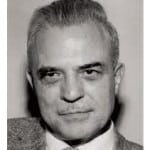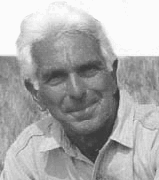Can You Be Like Erickson?
For my keynote address at the Erickson Congress in Puerto Vallarta, I shared a memorable experience when I was confronted with the urgent needs of a former patient of Milton Erickson. The man was experiencing a full-blown psychotic episode. He had the symptoms of paranoid schizophrenia and was absolutely insistent that he must “find Erickson” in order to complete his therapy (Erickson had presumably seen him for one visit in his teen years).
The rest of my story was about how I helped him find Erickson, mostly within himself and through reliving his memories. I then challenged the audience, pointing out that when people come to an Ericksonian practitioner, they have heard or read Erickson’s amazing stories of healing and are thus looking for Erickson. My question to the audience was, “Can you be like Erickson. Can you think like him and respond to client needs in the way that he did?”
My answer to this question was that you must start with the proper attitude. The reason this is so foundational is because before there is any complex action, there is a thought that guides it. And before there is any thought, there is an emotion that has taken charge and that shapes all subsequent thinking. And, before there is emotion, there is an attitude. It is the first thing to trigger in our brain, long before there is time for conscious thought. Metaphorically speaking, attitude is the first domino that sets everything else into motion. Thus, if you approach clinical problems with the proper attitude, you will most likely get everything else right.
To this end, I provided the audience with three attitudes that I thought were most essential to doing the type of work that Erickson did. For example, while trying to explain the importance of flexibility, I encouraged the audience to, “Remain absolutely flexible in your methods, while standing firm in your principles.” I explained that with strong, ethical principles you will never get yourself into trouble. And, if you remain absolutely flexible in your method, you can accommodate almost any client and address nearly any clinical need.
The audience loved the principles that I shared. The applause was the largest I have seen (for something I have said). However, there were many in the audience who wanted to know what other attitudes where on my list. They felt deprived, only hearing three. So for those individuals, and anyone else who is interested, I am sharing my full list. These are the six attitudes that I believe are foundational to Ericksonian therapy.
Attitude 1: “The most effective therapeutic technique is used only once in a life time.”
Many of these attitudes are counter-intuitive; otherwise everyone else would automatically be doing therapy as Erickson did. Accordingly, it would seem that if you have found an extraordinary technique, you should use it again and again. But this cannot be so if you are seeking to individualize treatment. The most perfect instance of tailoring means that you found just the right thing to do, at just the right moment, for this one unique individual. The goodness of fit expires the minute it has been used. Recall the statement above, “Remain absolutely flexible in your methods, while standing firm in your principles.” Ericksonians do not engage in formulaic therapies or “one size fits all” techniques. Of course, this does not mean that you cannot repeat useful methods. But if you are working like Erickson, you will modify every single technique to make it the best fit possible for the immediate situation.
Attitude 2: “There is opportunity to be found in every single problem.”
Although this sounds like a paradox, it simply reflects the fact that our minds and bodies are made for problem solving. More than that, our closest relationships and most important experiences in life revolve around collaborative problem solving. So how can there not be opportunity in every problem? Without them there would be no challenge or reason for learning and discovery. Furthermore, people tend to find what they are looking for. If people learn to dread all problems, then suffering and despair are what they are most likely to find. But when people learn to look for opportunity in every problem situation, then that is what they are most likely to discover. This is the attitude that Ericksonians use to create a problem solving context and to develop the type of strategic interventions that characterized Erickson’s work.
Attitude 3: “Every person has two intelligences to work with.”
After spending many years studying the evolution of Erickson’s clinical intelligence, as best as I can tell, he was initially inspired by the philosophical pragmatism of William James (either consciously or unconsciously). If we consider the fact that while Erickson was in college, William James was the only American psychologist to have written and spoken extensively about hypnosis (Erickson’s professor, Clark Hull, would be the next American expert to write a text on the subject), then it makes sense that he would have reviewed his work, along with the work of Morton Prince who was a close friend and student of James’ work. This is relevant because the comment above was taken from a lecture by William James and later came to typify Erickson’s unique problem solving approach. As he would say to his clients, “You have two minds, a conscious mind and an unconscious mind.” Erickson would then proceed to work with both intelligences.
Attitude 4: “The birth of new ideas requires some labor before delivery.”
Though I wrote it, I am not certain how much I like this statement. Honestly, I labored and labored over it but could not come up with something better, not yet. The point made here is that excellence requires work and some uncertainty. It is more comfortable to stay stuck in what we already know, that which is familiar is comfortable and easy. In contrast, Erickson taught the importance of destabilization, either by confusion, surprise, or by shock. It seems that for major paradigm shifts to take place, a person must be willing to endure a period of uncertainty and hard labor. As an interesting aside, we should keep in mind that one of the most brilliant minds in recorded history, Socrates, once said, “The greatest thing that I know is that I know nothing.”
Attitude 5: “Experience is more meaningful than thought.”
This attitude will be instantly obvious to anyone trained in Ericksonian methods. In contrast to approaches such as cognitive behavioral therapy (which is steeped in academic tradition), Ericksonians seek to involve all five senses in the process of discovery and learning. Whether it is within the context of a hypnotic trance, or while hiking up a beautiful mountainside, clients are provided with life experience and the sensual experience of novelty rather than academic ideas for how change should occur.
Attitude 6: “Nothing is useless.”
This attitude of utilization could have been written in positive form, “Everything has a use.” But then the statement would have lost its double-meaning. In order to see the second idea, consider the following rule, known as the Dead-man’s Rule, “If a dead-man can do it, then it is not a good goal for therapy.” In other words, getting people to stop their symptomatic behavior, to stop fighting in marriage, to no longer feel pain, to stop resisting therapy, all of these are the absence of personal agency, and thus something a dead-man can do. In contrast, Erickson found unique ways to utilize and grow behavior, all behavior, including the presenting symptoms.
When we set positive goals rather than negative goals, it allows people to discover what they can do. For example, learning to be more kind in marriage, learning to manage pain when it is not needed, or how to make a valuable contribution to the therapy efforts, all of these contribute to a stronger sense of self and an increased readiness for future challenges. This last attitude, the attitude of utilization is what I think makes Ericksonian therapy so uniquely effective.
I hope you enjoyed my top six list for being Ericksonian. If you will memorize these, and spend some time thinking about them, then I think you will be pleased with the automatic results.


 BOL: I hope our conversation will focus on the how-to of intervening in order to enhance the performance of organizations. You are a master of that art, but your most important work has focussed elsewhere: on understanding the nature of the organization,...
BOL: I hope our conversation will focus on the how-to of intervening in order to enhance the performance of organizations. You are a master of that art, but your most important work has focussed elsewhere: on understanding the nature of the organization,...  BOL: Alfred Adler’s name is better known to today’s therapists than are his ideas and methods. Your dedication to this body of work must be based on the belief that contemporary practice is diminished because Adler’s contributions are not...
BOL: Alfred Adler’s name is better known to today’s therapists than are his ideas and methods. Your dedication to this body of work must be based on the belief that contemporary practice is diminished because Adler’s contributions are not...
Dear Dan Short,
your article is very helpful to me. It is short and sweet. Just to mention attitude no. 1, you very aptly clarified uniqueness of all therapeutic situations. I have learnt again and again from my failures. When I became impressed with my unusual success with unusual technique, I tried to repeat it. Then I failed. So, now my mind have given up the idea of using some technique in a pre-decided form. And, happily failure rate has gone markedly down. My skill of individualizing therapy is increasing day-by-day. Your article has provided further boost in that direction.
Thanks a lot.